Managing falls and fracture risk in care homes
The prevention and management of falls is an important issue in maintaining quality of life and independence for older people, particularly for those living in care homes.
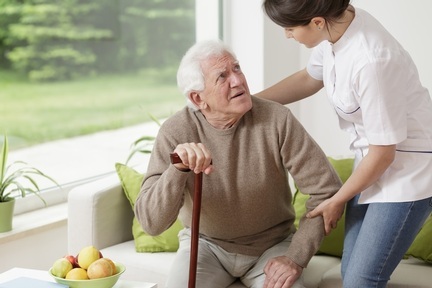
According to the National Institute for Health and Care Excellence (NICE), older people living in care homes are three times more likely to fall than those living in the community, and a quarter are likely to suffer serious injuries and be admitted to hospital following the accident.
Michelle Mitchell, charity director at Age UK, says: "The risk of falling over increases as we get older for many reasons, including deterioration in muscle strength and balance, failing vision and problems with medication.
"All older people at risk of falls should be given a comprehensive risk assessment which can be arranged by a care home or GP. There are also a number of simple things older people can do themselves to prevent falling over, from having regular health checks to finding out how to do strength and balance exercises."
Vulnerability
Whilst anyone can have a fall, Alzheimer’s Society highlight that older people are more vulnerable and likely to fall, particularly if they have a long-term health condition such as dementia or Parkinson’s disease. Although most falls do not result in serious injury, there is always a risk that a fall could lead to a fracture, causing the person to lose confidence, become withdrawn and feel as if they have lost their independence.
Many factors can contribute to this heightened risk, such as physical frailty, physical inactivity, taking multiple medications and the unfamiliarity of new surroundings. For this reason, NICE recommends that all care homes implement a person-centred process to manage and reduce the risk of falls and fractures.
Prevention
Sunrise Senior Living’s general manager at Fleet, Kara Hooper, has revealed her top tips to prevent falls in a care home.
"At Sunrise, we have a 'whole team' approach to checking the surrounding environment on a daily basis, ensuring that there are no trip hazards in any of the residents’ rooms, such as rugs and clutter which could risk an incident. The general manager of the community also checks the overall building during their daily walks around the community to catch up with residents and staff members.
"Ensuring that appropriate footwear is worn at all times by all residents is also essential in preventing falls and keeping safe, and every resident has a regular review with their GP to reduce and monitor any medications that may contribute to falls, as well as indicating when and where residents may need additional support or assistance."
Additional ways to prevent falls in care homes include (Alzheimer’s Society):
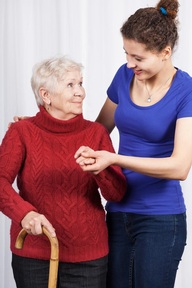
• Adapt the physical environment to include hand rails, sensory lighting and bold colours
• Use slip resistance flooring and provide suitable footwear
• Check the positioning of furniture
• Avoid trip hazards
• Keep objects within easy reach
• Label the environment
• Provide multiple and accessible seating areas both inside and out
• Offer daily exercises and physical activities
• Arrange regular visits from opticians, GP’s and chiropodists
• Train staff to manage and reduce the risk of falls
Dementia
A significant overlap exists between people with dementia and the risk of injury and fractures. Of the approximate 80,000 patients admitted to hospital with hip fracture in the UK every year, more than a quarter are likely to have a diagnosis of dementia.
Confusion, disorientation, memory loss, agitation, behaviour that challenges and a lack of judgement can contribute to an individual's falls risk and while some may require regular reorientation to their surroundings, others may require visual cues to reduce their risk of falling.
Dominic Carter, policy officer at Alzheimer’s Society, said: "People with dementia can be more likely to trip and fall – the condition is associated with declining muscle strength and symptoms mean that someone could easily forget they need a walking aid.
"Poor care home design with no consideration for the condition can cause a person with dementia to trip or fall, as well as reducing their quality of life. There are increasingly affordable and innovative home adaptations available, and care home staff need to be able to spot and address potential risks while encouraging an active and independent life for the person with dementia.
"People with dementia should be able to walk confidently and safely over plain, coloured flooring - uneven floors, cluttered rooms and poor lighting make it easy to trip and fall. A person with dementia could think that dark coloured mats and rugs might be objects or holes that they need to step over; shiny floors could look wet or slippery; and patterned floors could be covered in litter."
Training
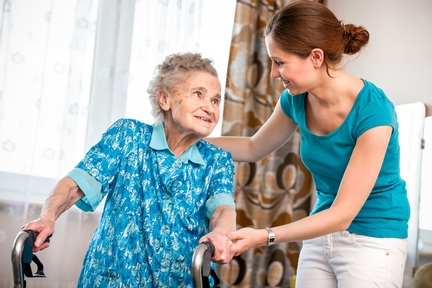
According to a new study published in The Lancet, combining virtual reality and treadmill training could prove effective at preventing falls in older people.
Researchers believe the intervention, which combines the physical and cognitive aspects of walking, could be used in care homes throughout the UK to improve safety, particularly for those with conditions which affect movement, such as Parkinson’s disease.
The simulation has been designed to reduce the risk of falls in older adults by including real life challenges such as avoiding and stepping over obstacles like puddles or hurdles, and navigating pathways.
Around 282 participants aged between 60 and 90-years-old took part in 16 training sessions over six weeks, with each session lasting 45 minutes. Prior to the training, participants in the treadmill only group had an average of ten falls per six months and participants in the treadmill plus virtual reality group averaged eleven falls per six months.
After training, the incidence rate of falls decreased in both groups, with nearly a 50 per cent decrease found in the number of falls in the treadmill plus virtual reality group.
Study author Dr Anat Mirelman of the Center for the study of Movement, Cognition and Mobility (CMCM) in Israel, said: "Falls in older people often occur because of tripping and poor obstacle negotiation while walking. They often start a vicious cycle, which has many important negative health consequences.
"Older people’s ability to negotiate obstacles can be impaired because of age-related decline in cognitive abilities like motor planning, divided attention, executive control and judgement, yet current interventions for falls in older adults typically focus on improving muscle strength, balance and gait.
"Our approach combines treadmill exercise and virtual reality to help improve both physical mobility and cognitive aspects that are important for safe walking."
For more information on the management and prevention of falls, visit: www.alzheimers.org.uk
Latest Features News
 25-Nov-19
2019 Election: Boris Johnson leaves social care in 'too difficult box' but Labour vows to end 'crisis'
25-Nov-19
2019 Election: Boris Johnson leaves social care in 'too difficult box' but Labour vows to end 'crisis'
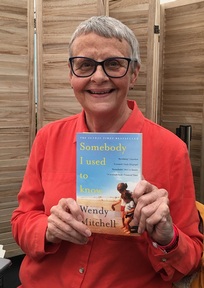 18-Oct-19
Podcast: Wendy Mitchell and dementia: 'My biggest fear is not knowing who my daughters are'
18-Oct-19
Podcast: Wendy Mitchell and dementia: 'My biggest fear is not knowing who my daughters are'
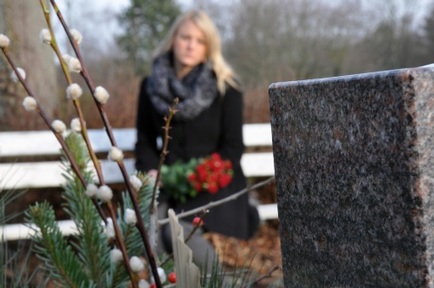 27-Sep-19
Exclusive: Care minister backs care workers' call for time off to grieve and attend funerals
27-Sep-19
Exclusive: Care minister backs care workers' call for time off to grieve and attend funerals
 19-Sep-19
Podcast: Gyles Brandreth says poetry helps ward off dementia
19-Sep-19
Podcast: Gyles Brandreth says poetry helps ward off dementia
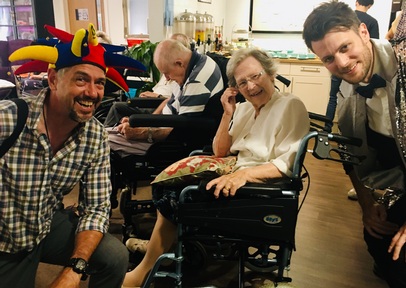 30-Aug-19
Edinburgh Fringe funnyman joins comics facing toughest audience at care home gig
30-Aug-19
Edinburgh Fringe funnyman joins comics facing toughest audience at care home gig